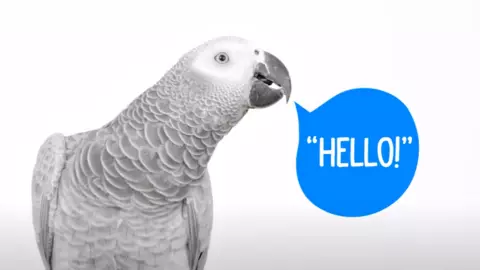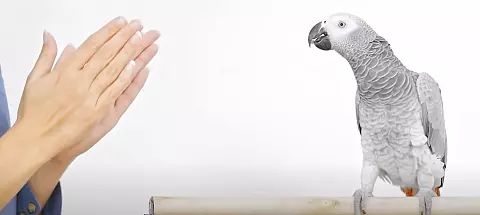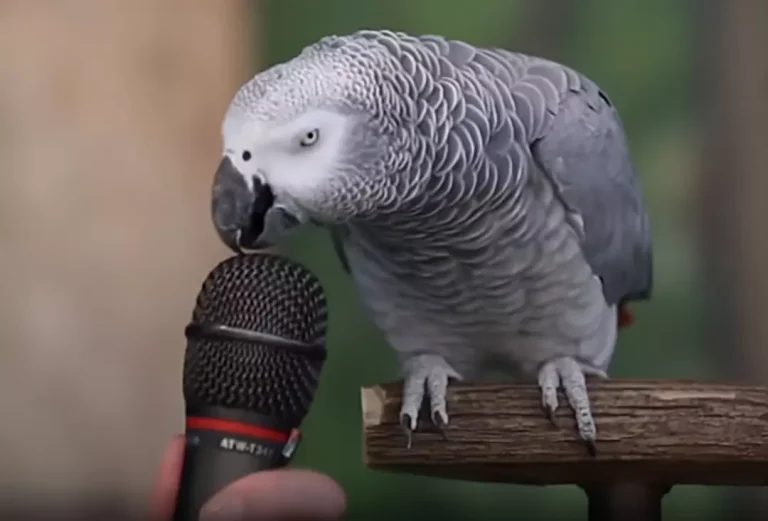Species like parrots have an anatomy essential to mimic the human voice. You might have bought a parrot since they have different vocalization abilities, and you love to have the fun of verbal interaction with the feathered mate. But do you know how to teach parrots to talk?
As a parrot parent, you should be patient, make a strong bond with your pet, start with easy words, repeat them often, love them unconditionally to gain trust and offer them food, perches, or treats weekly to make them mimic your words. Spend a significant amount of time, like months or years, training to have a talkative parrot friend.
Whether it’s Macaws or African Grey parrots, teaching your bird to talk can be challenging, but following our tips will guide you to make them talk. However, ensure you feed yourself by noting all the tips we included in this article.
Understanding Your Parrot’s Anatomy and Behavior
Parrots have a unique anatomy that allows them to mimic human speech. Their sociable nature and keen sense of hearing make them apt pupils. Before diving into the training, it’s essential to understand that while all parrots have the potential to talk, their inclination varies based on species, age, and individual personality.
Can A Parrot Talk?
People often get confused if parrots really can talk or not. But the truth is it depends since your parrot buddy might be a camera-shy animal or don’t like to talk.
However, a few bird species, particularly parrots, songbirds, and mynah birds, commonly mimic human speech and learn to talk with proper training. So, yes, parrots can talk with humans by following their words and other sounds, and they can be taught how to understand and respond to any particular words or phrases.
How Do Parrots Talk: 5 Common Facts About Birds
The ability to mimic human speech and words can be done by parrots, parakeets, cockatoos, blue jays, European starlings, and commonly mynas. But how does their voice come?
- The physical structure, nerve systems, and possible learning and memory capacity help them learn any speech to imitate.
- The sound they make won’t be the same as humans since they lack vocal cords, lips, tongues, and other speaking organs, but they can communicate better if trained ideally.
- Parrots make sounds by blowing across the bifurcated trachea’s mouth.
- You’ll notice medial tympani-form membranes that regulate airflow through the throat for having developed syrinx in green parrots.
- Regular contact, repetitive words, and supportive behavior help the bird learn new words or phrases to speak out.
Why Do Parrots Talk?
Since parrots are sociable and friendly-natured bird species, they enjoy interacting with their owners by following their words. They have built up a form of “Talking” similar to how other animals, like cats, say meow or dogs bark to communicate with us.
Parrots are regarded as mimicry masters because they love mimicking their owner or hearing other sounds. They try to repeat the surrounding noise and don’t try to understand the language. However, you can search “why do parrots talk on Reddit” for more information about parrots’ talking habits.
At What Age Do Parrots Start Talking?
We often search to know how to train green parrots to talk. But can you tell us when they learn to talk?
Parrots usually start to talk any language or imitate any words within three months to twelve months or one year at best. But it’s not guaranteed that they will talk since the training or learning ability will say when the parrot will communicate. However, the time will vary based on some facts, such as:
- Parrot species
- The personality of the birds
- Training Level
- The bird’s gender
- Ability to understand the language or words.
How Long Does It Take To Teach A Parrot To Talk?
Trying to teach the bird to talk is like surfing in the sea, which is problematic. Typically birds like parrots learn to talk early, just after they fledge. However, you can count several weeks to teach your feather friend to talk.
Whenever you hear a mumbling sound, prioritize teaching them simple words like “Hello.” Your bird will love to mimic your words if they get proper training and practice sessions.
Generally, the species, age, and bonding with the owner will say how fast your bird buddy will learn to speak. Most significantly, your time and effort will determine how long it takes to teach the feathered friend.
Which Parrot Is Best For Talking: 12 Talker Parrot Species
A few species of parrots can talk and imitate sounds. Among all, the best talkative parrots are
| Talker Parrot | Scientific Name |
|---|---|
| African Greys | Psittacus erithacus |
| Macaw | Ara macao |
| Quakers | Myiopsitta monachus |
| Eclectus | Eclectus roratus |
| Cockatoo | Cacatuidae |
| Tame Cockatiels | Nymphicus hollandicus |
| Budgerigars | Melopsittacus undulatus |
| Jardines | Poicephalus gulielmi |
| Amazon | Amazona |
| Alexandrines | Psittacula eupatria |
| Indian Ringneck Parakeet | Psittacula krameri |
| Derbyan Parakeet. | Psittacula derbiana |
Step-by-Step Guide to Teaching Your Parrot to Talk

Usually, the flock creatures engage in vocalization and group activities. As a result, they try to adjust to being in a human group by communicating or mimicking them. Although they don’t even understand the language, copying is their hobby!
However, if you want to teach your parrot some new words or phrases, you’ll need to be persistent, gentle, and cordial in front of your parrot. Here are some tips to help you deal with your bird’s talk.
Know Your Bird:
Every parrot species possesses its own set of characteristics. For instance, African Greys are renowned for their impressive vocabulary and ability to mimic complex sounds. Macaws, on the other hand, have a clear, resonant voice but might be choosier about the words they replicate. Before embarking on the teaching journey, delve into the specifics of your parrot’s species. This foundational knowledge will help set realistic goals and tailor your approach.
SEE MORE: How Many Words Can A Macaw Learn
Create a Bond:
The foundation of any successful training lies in the bond between the trainer and the trainee. Spend unhurried, quality moments with your parrot, engaging in activities they love. This mutual trust and understanding will make them more receptive to your teachings and eager to communicate with you.
Start With Easy Words

If you’re starting to teach words, choose a short, simple, and straightforward term or phrase that will be easy to enunciate. But don’t get upset if the birds only whistle back rather than talk since they are not talking birds.
However, starting with simple words can be easier to catch in their brain. You can teach them food names, greetings, birds’ names, or other easy words to imitate. For example:
- “hello,”
- “bye-bye”
- “good-bye”
- “night, night”
- “bird”
- “come in”
- “ouch.”
When becoming a master bird of learning easy words, you can teach multiple phrases, words, or even sentences. And don’t forget to be always happy with a positive tone and give proper attention to catch their mind.
Clear Speaking:
When a word is pronounced clearly, parrots can catch it more easily. They will listen to you talk and observe you because they are interested in sounds usually.
Therefore, the teacher must adequately express while maintaining consistency in tone without stumbling over words. So, using the same tone and clear pronunciation is crucial!
Use Visual Aids:
Parrots are not just auditory learners; they’re keenly visual too. When teaching a new word, pair it with a related toy or object. For instance, show an apple toy when teaching the word “apple.” This association of sound with a visual cue can accelerate their learning process.
Rewarding Treats And Teaching Words:

Your energy and tone play a pivotal role in parrot training. When introducing a new word, say it with genuine enthusiasm. This excitement can pique their interest. However, ensure you maintain a consistent tone and pronunciation each time to avoid confusion.
Celebrate Every Effort:
Positive reinforcement is a powerful tool. Whenever your parrot attempts to speak or successfully mimics a word, reward them with their favorite treat or some affectionate petting. This not only encourages repetition but also reinforces their association of speaking with positive outcomes.
Leverage Social Learning:
If you’re a multi-parrot household, you’re in for a treat. Parrots can inadvertently teach each other. A word or sound picked up by one bird can quickly become a favorite among the flock. Use this to your advantage by conducting group training sessions.
Practice Regularly:
Like any skill, consistency is crucial when teaching parrots to talk. Set aside dedicated time slots each day for focused training. This routine helps in reinforcing learned words and introducing new ones.
Motivate For Long Phrases
Increase or develop phrases or words after discovering that your parrot friend has already learned simple words. They can string phrases together. For example, if you have taught saying “hello,” you can also include your name to say in a way like “hello, Sarah.” And they will eventually be able to say both words together.
Be Patient:
Every parrot is an individual with its own pace of learning. While some might pick up words within weeks, others might take months. Celebrate every small achievement and remember that the journey is as rewarding as the destination.
Species-Specific Insights
- African Greys: Known for their vast vocabulary, they respond well to interactive sessions and often mimic sounds from their environment.
- Macaws: While they have a clear voice, Macaws might be more selective in the words they choose to mimic.
- Budgerigars: These small birds can be quite talkative. Males are generally more vocal than females.
FAQ For Teach Parrots To Talk
How long does it take for a parrot to talk?
It varies. Some might start as early as three months, while others might take a year or more.
Do female parrots talk as much as males?
It depends on the species. For instance, male budgerigars are more vocal than females.
Can older parrots learn to talk?
Yes, but younger birds generally pick up words faster.
What is the most trainable parrot?
Budgies or Budgerigar parrots are the most accessible bird to train to talk and to be social. This bird species can learn with better trainability, intelligence, with a good personality. Also, if properly cared for, they can be low-sound-loving pets.
What is the easiest parrot to teach to talk?
Monk Parakeet or Quaker Parakeet is the quickest and easiest talking parrot with an extensive vocabulary. But African Grey would be much better as a talking bird with hundreds of vocabulary, but they cannot be faster-talking birds like Quakers.
How to teach Quaker parrots to talk?
To hear the mimicking sound of the Quaker bird, you can follow some advice:
1. Teach them to talk with patients.
2. Introduce them to phrases or words such as “Hello” or “Hi.”
3. Repeat the words several times to let them memorize words.
4. Always make a soft but joyful, high-pitched sound.
5. Offer them toys and treats as a reward for talking or repeating sounds.
6. Following the guidance of a professional bird owner or taking vet advice.
How many words can parrots say?
Parrots typically learn 300-500 vocabulary words, but the best parrot species, such as the African Grey, can learn up to 1000 words and more. Even a budgie called Puck in 1995 made the Guinness World Record for having the most comprehensive bird vocabulary ever, with 1728 words.
What are the best words to teach a parrot?
Calling by name, greetings, or goodbyes are the best things to teach your parrot. You can teach your birds their name or the words like “hello,” “Hi,” “bye-bye,” “I love you,” or “nite-nite.”
Final Words
Teaching your parrot to talk is a journey of patience, understanding, and bonding. While the process might vary based on the species and individual bird, the joy of hearing your feathered friend converse is unparalleled. Remember to celebrate the small milestones, be consistent in your training, and most importantly, enjoy the process!
Besides that, understand their nature and ensure you have a parrot species that can mimic or talk almost like humans. With proper training, your bird will follow your words within six to twelve months.

Hi, I’m Regina Rios. Just another bird lover who loves to share knowledge from personal experience. I’ve grown up with pet birds since childhood as my mommy also loves birds. As I can’t pet many birds in open air in my house as my mom does; I created my first bird cage on my rooftop using wood, copper wire, and a metal shed in 2018 and start collecting pet birds. Now, I have so many pet birds such as Macaws, Parrot, Cockatiel, Parakeet, and others. Not only that, if I see natural birds are injured I keep them in my house until they get well. Now, my hobby becomes my income source as my home birds have babies and I sell them to birds lover like mine. I’ve created this blog to inspire others bird owners by sharing my personal knowledge. Good Luck!


